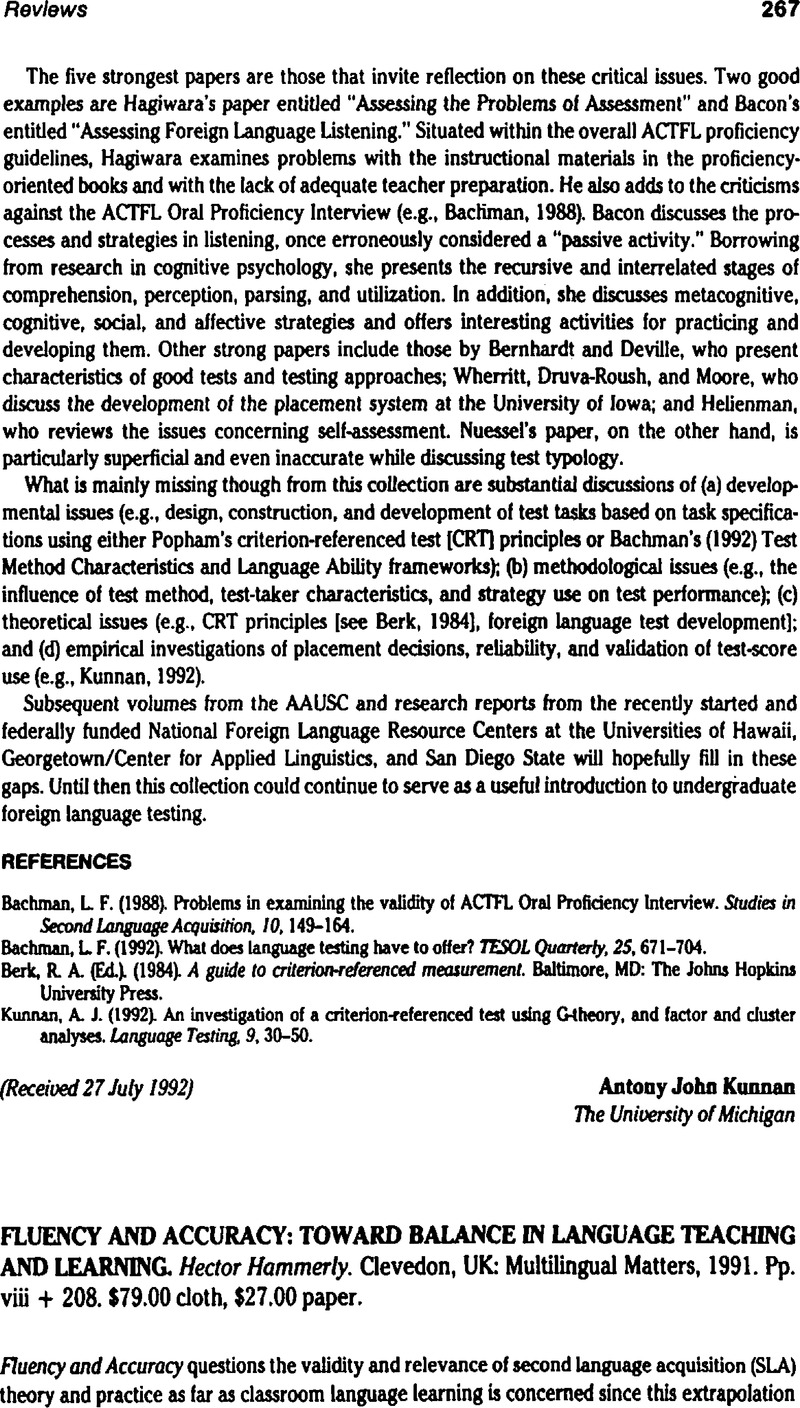No CrossRef data available.
Article contents
FLUENCY AND ACCURACY: TOWARD BALANCE IN LANGUAGE TEACHING AND LEARNING. Hector Hammerly. Clevedon, UK: Multilingual matters, 1991. Pp. viii + 208. $79.00 cloth, $27.00 paper.
Review products
FLUENCY AND ACCURACY: TOWARD BALANCE IN LANGUAGE TEACHING AND LEARNING. Hector Hammerly. Clevedon, UK: Multilingual matters, 1991. Pp. viii + 208. $79.00 cloth, $27.00 paper.
Published online by Cambridge University Press: 07 November 2008
Abstract
An abstract is not available for this content so a preview has been provided. Please use the Get access link above for information on how to access this content.

- Type
- Reviews
- Information
- Copyright
- Copyright © Cambridge University Press 1993
References
REFERENCES
Ellis, R. (1984). Can syntax be taught? A study of the effects of formal instruction on the acquisition of WH questions by children. Applied Linguistics, 5, 138–155.CrossRefGoogle Scholar
Ellis, R. (1986). Understanding second language acquisition. Oxford: University Press.Google Scholar
Hammerly, H.(1985). An intergrated theory of language teaching and its practical consequences. Blain, WA: Second Language Publications.Google Scholar
Kaplan, M. (1987). Developmental patterns of past tense acquisition among foreign language learners of French. In VanPatten, B., Dvorak, T., & Lee, J. (Eds.), Foreign language teaming-A research perspective (pp. 52–60). Rowley, MA: Newbury House.Google Scholar
Krashen, S. (1987). Principles and practice in second language acquisition. Englewood Cliffs, Nj:Prentice-Hall.Google Scholar
Lightbown, P. (1983). Exploring relationships between developmental and instructional sequences in L2 acquisition. In Seliger, H. & Long, M. (Eds.), Classroom-oriented research in second language acquisition (pp. 217–245). Rowley, MA: Newbury House.Google Scholar
Long, M. (1983). Does second language instruction make a difference? A review of research. TESOL Quarterly, 17, 359–382.CrossRefGoogle Scholar
Sharwood Smith, M. (1981). Consciousness-raising and the second language learner. Applied Linguistics, 2, 159–169.CrossRefGoogle Scholar
VanPatten, B. (1990). Attending to form and content in the input An experiment in consciousness. Studies in Second Language Acquisition, 12, 287–301.CrossRefGoogle Scholar


